“Haha, yeah right,” laughed my close family member when they saw me reading The 4-Hour Workweek at the age of 17. It just seems hard to believe, like a scam promise. Most people work at least 40 hours per week. Both my parents are small business owners who worked 80+ hours per week.
But fast forward 3 years later, and I’m traveling around Southeast Asia. I have a website that provides a full-time income, even while I’m traveling. And I can manage it from my Macbook Pro, anywhere in the world.
And yeah, sometimes I was working 4 hours a week. Because when you’re staying near a beautiful tropical beach in Southern Thailand (for $15 a night!), then you want to make the most of that time. Drink some mango smoothies. Go snorkelling. Meet other backpackers. Have some fun.
So when I say this book changed my life, I’m not exaggerating.
But can it do the same for other people, like you?
Many people hate their jobs. If they won the lottery, they would never come to work again. But it feels like we have no other choice. After all, isn’t everyone trapped in the same 9-5 rat race?
The 4-Hour Workweek explains an alternative path, a path you can take to design your own lifestyle rather than follow social norms. Is everyone going to be as successful as Tim? Definitely not. Business is always risky. But we can all learn how to:
- Improve our odds of success in online business, by following Tim’s tips for market research, product testing, and online sales.
- Become more productive in our career or side-hustle, by learning how to eliminate, automate and outsource much of our work.
- Think unconventionally about our future, because the first step to designing our ideal lifestyle is hearing stories from others who have done it successfully. Then it stops feeling impossible.
Are you excited to get started? I sure am! So let’s go!
Who is Tim Ferriss?
Tim Ferriss (official website) is a serial entrepreneur, top podcaster, and New York Times bestselling author. He was also an early investor in startups like Uber, Shopify, Facebook, and Twitter.
But when Tim first graduated university (at Princeton), his life was pretty depressing. He spent months looking for a job, finally landing a sales position at a startup, where he spent 12 miserable hours every day.
He launched his first business, a sports nutrition supplement called BrainQUICKEN, with a few thousand dollars and months of extensive study of business. Luckily, that business took off in a big way, allowing him to quit his job and travel the world.
🌍 1. Escape the Ordinary: For a more fulfilling life, challenge social conventions that usually go unquestioned
I’ve always found it fascinating that we live in a society with so many strange conventions that people never question. Like, why do almost all university degrees need exactly 4 years to learn the knowledge? Why not 2 years for some degrees, 5 years for others? How can it be possible that you need exactly the same number of hours to learn history as you do physics or literature or engineering?
Or, why do almost all jobs require exactly 40 hours every week?
This book begins with the surprising title “The 4-Hour Workweek” because Tim Ferriss wants us to re-examine the hidden social rules that we are following. What invisible assumptions do we live by, without even realizing it?
Robert Cialdini is a Professor of Psychology and author of the famous book Influence. He says one of the most powerful methods of interpersonal influence is called “social proof.” That simply means that when we see other people doing something, especially high-status people, then we automatically want to copy them. We assume that if many other people are doing something, then it must be right.
Social proof is why some marketing techniques are effective, like celebrity endorsements, customer testimonials, and positive online reviews. It’s why when a star basketball player wears certain shoes, then everyone seems to want them. And it’s why we tend to wear the same clothes as other people in our social groups, and follow the career paths that are shown to us by authorities in schools.
To overcome the pressure to follow the crowd, we must practice “Lifestyle Design”—that is Tim’s name for writing down exactly what we want our life to look like in the future.
Although this sounds obvious, most of us never take the time to clarify: what do we really want our typical day to look like in 1 year, 3 years, and 5 years? When we are clear on what we want, then we can make decisions that move us towards our desired lifestyle.
Like I wanted to have the freedom to travel the world for months at a time as a digital nomad (Wikipedia), so I chose to research online business opportunities, and found ways of making money from my laptop. Other people may want to be deeply involved in their local community, so they actually want a business or career that keeps them firmly rooted in one place. So it’s very important to know what kind of lifestyle you desire.
Tim’s goal-setting tips are quite simple to follow:
- Write down several things you want in the next 2 years. He recommends thinking about our goals in three different categories: what we want to be (skills), do (experiences), and have (possessions). Like you may want to become great at cooking Indian food, visit the Grand Canyon, and buy a lakefront home.
- Calculate exactly how much that would cost per month. Add up all that you want, figure out what each thing would cost you monthly. Don’t start to get intimidated, we’re just dreaming at this point! This number is your TMI, or Target Monthly Income. That’s your dream, transformed into a concrete and definite number.
We can escape social conformity through Lifestyle Design, that is, writing down exactly what we want our life to look like 2 years in the future. Make a list of what you want to be, do, and have. Then calculate how much it will cost per month to achieve your dream.
✍️ 2. Write Down Your Fears: This simple writing exercise can relieve your hesitation, self-doubt, or procrastination
I have a question for you: What stops us from going after the life we really want?
Some people do have real responsibilities, so they can’t just quit their job today. Like a mother and father need to provide for their child. That’s their most important obligation.
But, more often than not, fear is the most powerful reason for our hesitation. We’re afraid of failing. We’re afraid of looking stupid. We’re afraid of wasting our time and energy on something that doesn’t work. We’re afraid to lose what we have and all that we have built so far, a life that provides security and comfort. We’re afraid to step into the unknown.
Perhaps my favorite book ever is The Prophet by Khalil Gibran, which is really a book of poetry. In it, the character playing the wise prophet asks a crowd of listeners, “Tell me, have you [peace, memories, and beauty] in your houses? Or have you only comfort, and the lust for comfort, that stealthy thing that enters the house a guest, and then becomes a host, and then a master? […] [Truly] the lust for comfort murders the passion of the soul, and then walks grinning in the funeral.”
Read our summary of The Prophet by Khalil Gilbran (coming in the future)
The good news is, Tim Ferris accidentally found a way to decrease fears. His method is to write down fears in very clear detail. The clarity of knowing exactly what the worst thing that could happen might be, seems to reduce the size of our fears. It worked for him, so maybe it can work for us, too.
To understand this technique, it’s useful to understand more of Tim’s story. You see, many years ago his first online business had taken off, the sports supplement company. He was getting tons of sales, but he was also working 12 hours a day to keep everything running, afraid it would all collapse without his micromanagement.
One day, feeling overwhelmed with stress, Tim was inspired to actually write down his worst fears, which included lawsuits and bankruptcy. But then a strange thing happened—he started feeling better! With his fears clarified on paper, Tim’s brain saw that he would survive even the worst situations.
So he immediately bought a one-way plane ticket and took off on a worldwide adventure, which eventually lasted 15 months! His business was just fine and he felt amazing. That’s why Tim recommends we all stop waiting for “someday” to live our dreams and says “just do it and correct course along the way.”
Speaking of fear, let me share with you a story that really changed my life as a young man. I grew up with crippling social anxiety. Like I couldn’t even look any person in the eyes, and my armpits would be drenched in nervous sweat just going to a convenience store. It was that bad.
Then I stumbled into an incredible idea: That courage is not a lack of fear, but it’s about feeling afraid and then taking action anyway. So instead of avoiding social interactions because of my anxiety, I began going towards my fears. I made myself look people in the eye. I practiced talking for longer with kids at school, instead of running away. And over time, my anxiety dissolved.
(In fact, pretty much ALL of the official psychotherapies for anxiety disorders follow this principle, the principle of voluntary exposure to what one fears. Emotionally, it’s incredibly difficult to do, but it works and transforms you. Take action despite the fear.)
Our fears, doubts and hesitations can often be dissolved by writing down clearly what are the worst things that could happen. On paper, our fears lose their power because we see that we’ll survive. Ferriss used this technique to relieve his extreme stress about his business failing.
🎯 3. Leverage the 80/20 Rule: You can work less and accomplish more—by removing low-value work
The 80/20 Rule says that 80% of results in almost anything come from 20% of the inputs. It’s also called “The Pareto Principle” (Asana.com) because it was an Italian scientists named Pareto who first observed this rule in his garden plants. He saw that 20% of his pea plants produced 80% of the peas. Later people were surprised to discover the rule applies to almost anything in nature and life.
This idea is very useful for businesses and most careers, because generally speaking:
- 80% of profits come from 20% of customers.
- 80% of sales come from the top 20% of salespeople.
- 80% of our productivity happens during 20% of our work time.
- And so on…
Tim Ferriss was able to transform his supplement business from a prison to a source of freedom, simply by understanding and applying the 80/20 rule. First he found 80% of profits were coming from a handful of large wholesale customers, so he got rid of his “bad” customers, then focused on finding more of the “good” profitable big customers. And in just a few weeks, his income doubled to an incredible $60,000 per month.
Most of us wrongly believe that in order to be more successful and productive, we must work harder. But Ferriss says it’s more important that we do the right things—the 20% of activities that cause 80% of results. Then we can both work less and earn more.
In my own online business experience, I’ve always followed a similar idea: I find what is working well, then focus on that and nothing else. Let’s say I launch a new website to get traffic from Google. My first 10-20 articles will have a lot of variety because I am still finding out what works. But once I have written a couple of winners, articles that receive lots of traffic from Google, then I analyze why those worked and make more articles similar to those. Perhaps I chose the right topic for the article, or I picked the right headline to get clicks. The most successful content creators spend all their time thinking about stuff like this.
Investors also follow the 80/20 rule. I’m sure you’ve heard of the book Rich Dad Poor Dad by Robert Kiyosaki. It’s a mega-bestselling book on finance and investing. Kiyosaki tells the story of how he learned to become wealthy from his friend’s father, a successful business owner nicknamed “Rich Dad.”
The most important lesson he learned from Rich Dad is that “The poor and middle class work for money. The rich have money work for them.” This comes back to working harder versus doing the right things. Rich people don’t work harder than middle-class people, but they take the right actions. And that is having their money work for them, through buying assets that will produce more money, like public stocks and real estate. It’s like buying trees that will provide fruits long into the future.
The 80/20 Rule says 80% of our results come from 20% of our work time, or customers, or employees. So find what is working best, focus on that exclusively, then get rid of everything else. Your results will shoot up without you needing to work harder. (Just like Tim “fired” the majority of his customers, but then doubled his income.)
💸 4. Create Passive Income: Building an online business that provides extraordinary freedom
Want to start your own online business, especially one that provides passive income? Then keep reading! Tim’s classic book contains some of the best advice I’ve ever read for new entrepreneurs.
The first thing to understand is that most businesses DO NOT provide freedom. In fact, many entrepreneurs become trapped by their own creation. They end up needing to work much longer hours than a 9-5 job and feeling a lot more stressed than ever before.
How can we avoid that happening to us? We need to pick a type of business that CAN lead to a “4-hour workweek.”
Here are 4 businesses Ferriss recommends:
- Information products. Such as courses, books, membership sites, live webinars, and many others. (ActiveCampaign.com) Even if you’re not an expert on any subject right now, with a few weeks or months of dedicated study, you can probably create a course that is valuable to people. The secret is to make something for beginners or specialize in a very specific topic that nobody has covered before. Tim recommends this kind of business most because it doesn’t require a lot of money to start. In fact, this was my first online business, with courses teaching people communication and social skills.
- Physical products. This is about having an idea for a product, then getting in touch with manufacturers to create it. I know what we’re all thinking: that sounds too complicated and probably expensive! But it doesn’t need to be. For Tim’s first business, he paid just $5,000 to produce his first order of supplement bottles. He told them what ingredients to put in, the company did everything else and mailed the bottles to America.
- Reselling. This is selling the products of other companies. For example, there’s something called “drop shipping” where you set up a website that takes orders, and when you make a sale on your website, the order is automatically sent to the company to fulfill. It can be the fastest business to set up, but it’s also usually hyper-competitive with low profit margins. Related to this is affiliate marketing, where you can make sales commissions by sending people directly to a company’s website through your unique link.
- Licensing. Some people earn royalties by giving companies permission to use their intellectual property. These include book authors, music artists, and product inventors. Or, on the other hand, you could find people who have a good brand, then pay them a royalty to create products with a built-in demand. I think Masterclass.com has done this wonderfully—they have courses with Gordon Ramsey teaching cooking, Bill Clinton teaching leadership, and Tony Hawk teaching skateboarding.
Another critical decision you’ll need to make is what topic to focus on with your business.
Aspiring entrepreneurs often hear they should “follow your passion” and “do what you love.” Tim Ferris doesn’t say those cliches, but he does recommend choosing a topic you’re very familiar with. The best way to create a product other people want to buy… is to be a member of the target market yourself!
That’s why Tim’s first business was a supplement that improves mental focus, targeted towards students and athletes. He was part of both those groups, so he knew exactly what ingredients they would look for in a supplement, he knew what magazines they would be reading that he should advertise in, and so on.
Another great book for people wanting to launch an online business is The Millionaire Fastlane by MJ DeMarco. That author was working a job as a limousine driver, he had no money and was trying to invent a business idea. Then one day a customer asked him how to book a limousine in a different city they were traveling to. That gave him the idea to create a website that helped people easily book limousine rentals all over the country, and it made him wealthy.
DeMarco totally rejects the idea that we need to be passionate about the topic of our business. Instead, he tells us to: “Stop thinking about business in terms of your selfish desires, whether it’s money, dreams or ‘do what you love.’ Instead, chase needs, problems, pain points, service deficiencies, and emotions.”
In other words, you can often get the best business ideas not by dreaming about “what you love,” but by doing detailed market research, whether that is talking to people in person or reading what they are complaining about online. Check online forums, social media groups, Amazon reviews of existing products, etc.
Learn more in our summary of The Millionaire Fastlane by MJ DeMarco
Some of the best types of business for passive income include selling information products, getting a physical product manufactured, reselling other companies’ products, or licensing your intellectual property. Choose a market that you are part of, then do a lot of research on what people in the market need.
🧪 5. Validate Your Ideas: Test if people want to buy your product, before you develop it
Ever seen the TV show Shark Tank? Entrepreneurs come and show their new business ideas to a panel of experienced investors. They always look confident their idea is sure to be a success, but most often leave disappointed with the harsh feedback they received.
Entrepreneurs tend to be overoptimistic. If they weren’t, then they would never try to be an entrepreneur, the riskiest of all professions. They’d just go be an accountant or something.
The truth is, no matter how we feel, we never know if our product idea is really good… until we try to sell it. Tim writes “don’t ask people if they would buy—ask them to buy.”
That means we don’t ask our friends and family if our product idea is good, we go out to our target customer and ask them to buy. And it’s possible to do this before you’ve made your actual product! Tim Ferriss learned this lesson the hard way: In university he created an audiobook and paid for 500 copies of it to be made, but then he couldn’t sell it.
To test your idea, here is a super-short overview of Tim’s method:
- Create your own sales page in 1-3 hours, after researching similar existing websites.
- Send visitors to your page, paying no more than $500-1000 for Google Ads.
- Measure the response. You can use the free app Google Analytics to measure your website traffic and how many people are clicking the buy button to visit the checkout page.
- Put a “product out of stock” notice on the checkout page, since you don’t actually have the product yet. But you can assume most people who tried to fill out the checkout form were serious about buying.
The book most often recommended to aspiring startup founders is The Lean Startup by Eric Ries. That author failed in business twice, before launching a popular 3d messaging app called IMVU. Eric Ries says startups usually fail because they waste a lot of time creating a product, only to later find out nobody wants it!
His solution is to create a very basic version of our product idea as fast as possible, which is called a “minimum viable product.” Then we improve the product rapidly, based on real world testing, user feedback, and product metrics. It’s about learning as we go, learning what our target customers really want in the product based on their actions.
You must first try to sell your product idea, before you really know if it’s viable. Tim’s method is to quickly create a basic sales page, then send targeted visitors to it, spending no more than $1000 on advertising. If a lot of visitors make it to the checkout page, then your idea shows promise.
📺 6. Eliminate Distractions: Become twice as productive by cutting out unnecessary noise and content
In the technology industry, the magic word is “engagement.”
Some of the smartest people in the world spend their days trying to keep people as “engaged” on their apps as possible. What that really means is making us spend maximum hours per week using their product, whether that is Youtube, TikTok, Facebook, Twitter, Netflix, Playstation, or even The New York Times.
Why? Because they make most of their profits from advertising, so the longer our eyeballs stay on their platform, the more dollars they make. As a very smart person once said, “If it’s free, then you’re not the customer. You’re the product.” But the real cost is our attention, our productivity, our mental well-being, and—in the long-term—our dreams.
Tim Ferris says to go on a “low-information diet,” which means cutting out any unnecessary consumption of content. A few general guidelines include:
- Cut back on email. Most jobs don’t require us to be always connected. Switch to checking email twice per day, then once per day.
- Don’t watch the news. If something truly important happens, you’ll hear about it from people around you anyway.
- Learn how-to information as you need it. Learning endlessly “just in case” we will someday need the knowledge is a common way to avoid real action.
Another amazing book on productivity is Deep Work by Cal Newport, a computer science professor and researcher. He also says the modern world is pushing us toward constant distraction, nonstop notifications, and shallow emptiness.
And his solution is “deep work.” That means setting aside large blocks of time every day, free of interruptions, to do work that requires deep focus and mental effort. As Newport says, “Clarity about what matters provides clarity about what does not.” If we set aside time for our most important, meaningful, and productive work, then we can escape the digital noise that causes so many problems for people today.
Going on a “low-information diet” means eliminating the distractions that are useless and irrelevant to our future dreams. Check email once per day, don’t consume news, learn how-to info only as you need it, and set aside time blocks for “deep work.”
🎉 7. Pursue Excitement: Keeping life vibrant with engaging projects, adventures, and hobbies
To me, the words “passive income” brings up an image of someone lying on a beach, lazily sipping an alcoholic drink. But for most of us, a life like that will get boring very fast.
Tim Ferriss aims for excitement, that is essentially his life philosophy. He believes people feel best when they are engaged with life and moving towards meaningful goals. And that is why he is always actively working on new projects, despite the orange palm trees on the cover of his own book. Tim has written multiple books with 400+ pages each, he’s interviewed hundreds of people on his podcast, and he’s been involved in over 50 startups.
As someone who founded a business called “growthsummary.com,” I fully agree with Tim here. I’ve always felt best when I was growing towards the direction of my goals. The great psychologist Viktor Frankl also said, “What man actually needs is not a tensionless state, but rather the striving and struggling for a worthwhile goal, a freely chosen task.”
Here are 3 of Tim’s favourite ways to aim for excitement:
- Continuous learning. Always be learning some new skill, hobby, or language. Tim has been involved in countless sports and hobbies, like wresting, dancing, hunting, etc.
- A full-time vocation. Working on what you find really interesting or fulfilling. Today, Ferris admits he often works longer than 40 hours per week, but the difference is he’s doing what he wants.
- Mini-retirements. Taking 1-6 months off, to do something you’ve always dreamed of. Ride a boat down the Amazon, visit cathedrals in France, take courses in a local cooking school. It’s like spacing your retirement over your whole life, rather than waiting until we’re 65 years old.
Despite the title of this book, Ferriss says being passive is a sure road to discontent. The best aim is excitement, and that comes from always learning new things, being involved in fulfilling work, and taking time off to cross items off our bucket list.
- Calculate your TMI—Target Monthly Income. Write down a list of what you want in the next 3-5 years, then find out how much that would all cost? Perhaps it will cost $10,000 per month, or $20,000 per month or more. Don’t worry about how you’ll achieve that yet, just get a concrete number down on paper. That’s your aim.
- Write down your top 3 interests, and 1 information product idea for each. (You can find this by looking at what arrives in your email inbox, or what you spend the most money on in your credit card statement.) Can you research what people need related to those topics? Check Reddit and other online forums, see what products or books are already selling on Amazon.
- Create a sales page for one of your ideas. Okay, this one may take an afternoon at least, but it’s a lot faster than making the product and later finding out nobody wants it! The respected online marketing technology company LeadPages says a good sales/landing page contains 5 major elements: a unique selling proposition, a call to action, an offer, strong visuals, and supporting evidence. There is a fantastic free guide published by Leadpages that explains the details of how to write a sales page or landing page. They say the 5 essential elements include: a unique selling proposition, an offer, a call to action, strong visuals, and supporting evidence.
Today a lack of tech skills shouldn’t hold anyone back, because there are countless drag-and-drop platforms we can use to publish a simple web page online fast, such as Unbounce, LeadPages, Instapage, etc. And the next step is sending targeted visitors to that page, for which you’ll want to research tutorials and courses on Google Ads or Facebook Ads.
Update Dec 2023: meta fields and subheading titles

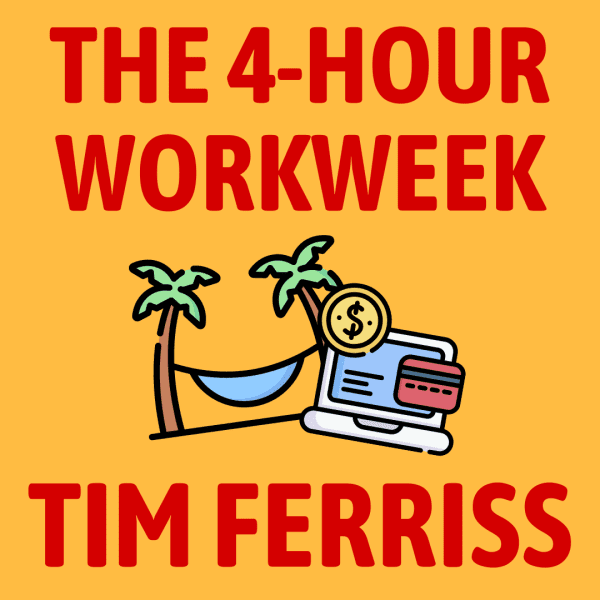
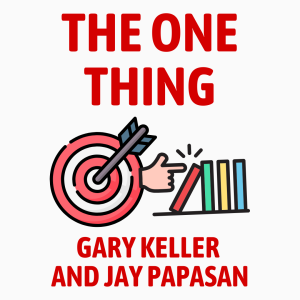
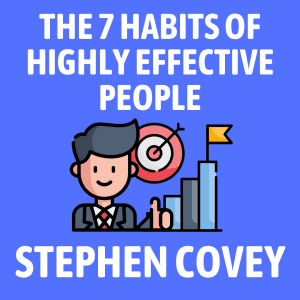

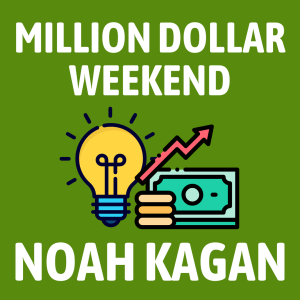

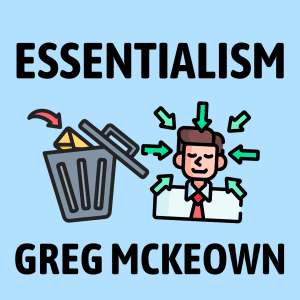







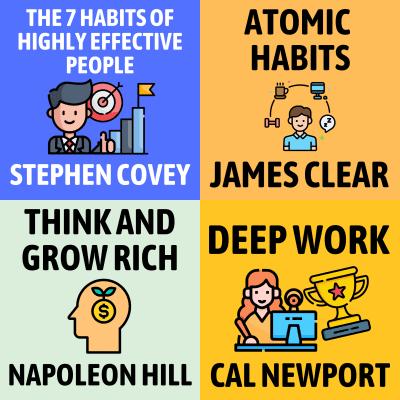





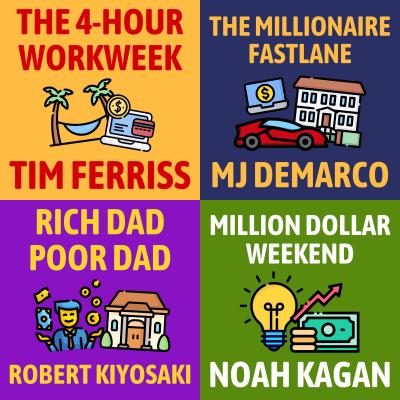












Community Notes